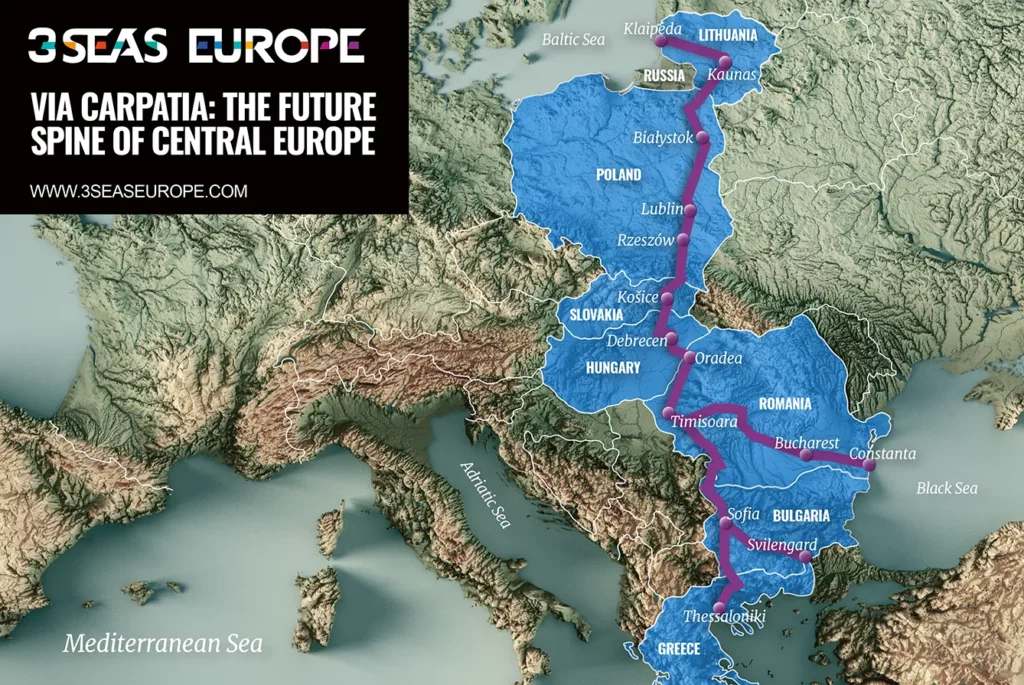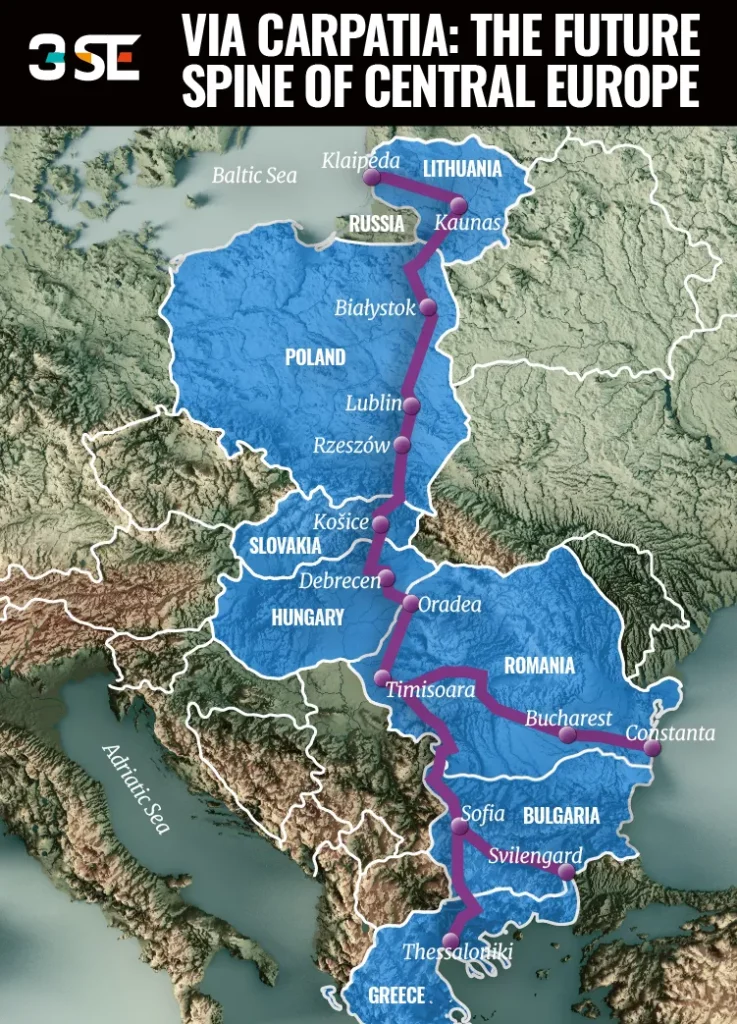On December 5, 2022, EU transport ministers unanimously backed the inclusion of the Polish section of the planned Via Carpatia expressway into the Trans-European Transport Network (TEN-T). With that decision, the entire path of the Via Carpatia will become a vital part of a larger pan-European transportation corridor running from Tallinn/Helsinki in the North all the way South to Limassol in Cyprus.
This is a very important boost to the development of sustainable and more efficient transport of people and goods, which will, at the same time, strengthen the economic, social, and territorial cohesion of the EU and become a big step in the Three Seas Initiative gaining real shape.
Significance of Via Carpatia
The Via Carpatia is an expressway meant to finally connect the Three Sea countries by a North-South axis (from the Baltic Sea to the Black Sea and the Aegean Sea), creating an efficient and coherent transportation system in Central Europe. The route is set to break the traditional model of the East-West trade axis, on which Central European countries have based their to-date economic growth. By connecting the so far poorly interconnected countries of the Three Seas Region, Via Carpatia will create great potential for building economic ties within the region, generate further growth, and eventually become the infrastructural backbone of the eastern part of the EU. Last but not least, as a high-capacity route conveniently placed along the potential frontline, Via Carpatia will also improve the safety of NATO’s Eastern flank.
The Via Carpatia is to be about 3,000 km long. The Polish section of 700 km is to be completed by 2026. Lithuania’s last 60 km long section will be completed in 2023. The most optimistic forecast for completion of the entire section in Slovakia, where 50 of the planned 150 km have been completed so far, is 2023. Hungary, meanwhile, has already completed construction of its 230 km section, as has Greece. However, it will not be possible to travel the entire route until 2030 at the earliest, as Romania and Bulgaria have declared completion of their sections for this particular year.
What is TEN-T?
TEN-T (Trans European Transport Network) is a tool for coordinating and ensuring the coherence of the EU transport system and its elements. The network includes the most essential connections from the point of view of the European Union’s development; not only road routes but also railway, air, sea, and river routes. Included, of course, are point transport infrastructure elements such as road terminals, rail hubs, seaports, and airports, as well as intelligent transport systems and management systems that take care of traffic steering, capacity, and safety.
“This is a very important day for Poland and the culmination of many years of efforts, carried out consistently since the turn of 2015-2016, aimed at including the main transport corridors, especially those in the East of Poland, in the TEN-T core network, the network of the main transport routes of the European Union. And this has been achieved. A road will be built that will connect the Three Seas,” Poland’s Infrastructure Minister Andrzej Adamczyk recalled.
The very act of including the Via Carpatia section running through Poland in the TEN-T confirms that the European Union treats the Via Carpatia project seriously and with due priority, understanding its enormous importance for the economic development and cohesion of the EU. It also opens the way for its financing with funds from the CEF (Connecting Europe Facility) program, which guarantees that Via Carpatia will be completed as scheduled.









